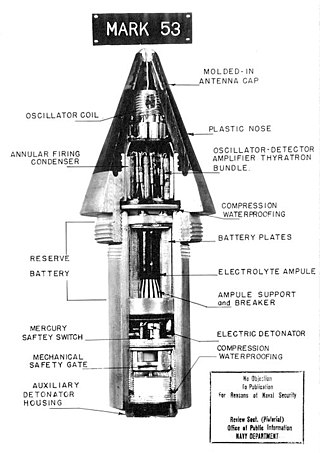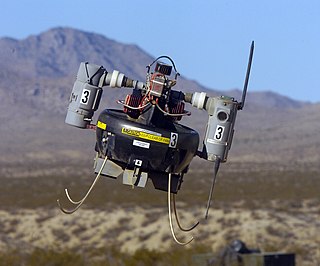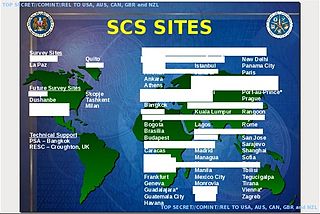Espionage, spying, or intelligence gathering is the act of obtaining secret or confidential information (intelligence). A person who commits espionage is called an espionage agent or spy. Any individual or spy ring, in the service of a government, company, criminal organization, or independent operation, can commit espionage. The practice is clandestine, as it is by definition unwelcome. In some circumstances, it may be a legal tool of law enforcement and in others, it may be illegal and punishable by law.

The Office of Strategic Services (OSS) was the intelligence agency of the United States during World War II. The OSS was formed as an agency of the Joint Chiefs of Staff (JCS) to coordinate espionage activities behind enemy lines for all branches of the United States Armed Forces. Other OSS functions included the use of propaganda, subversion, and post-war planning.
A covert listening device, more commonly known as a bug or a wire, is usually a combination of a miniature radio transmitter with a microphone. The use of bugs, called bugging, or wiretapping is a common technique in surveillance, espionage and police investigations.

The Defense Intelligence Agency (DIA) is an intelligence agency and combat support agency of the United States Department of Defense, specializing in defense and military intelligence.

Cold War espionage describes the intelligence gathering activities during the Cold War between the Western allies and the Eastern Bloc. Both relied on a wide variety of military and civilian agencies in this pursuit.

A proximity fuze is a fuze that detonates an explosive device automatically when the distance to the target becomes smaller than a predetermined value. Proximity fuzes are designed for targets such as planes, missiles, ships at sea, and ground forces. They provide a more sophisticated trigger mechanism than the common contact fuze or timed fuze. It is estimated that it increases the lethality by 5 to 10 times, compared to these other fuzes.

A thyratron is a type of gas-filled tube used as a high-power electrical switch and controlled rectifier. Thyratrons can handle much greater currents than similar hard-vacuum tubes. Electron multiplication occurs when the gas becomes ionized, producing a phenomenon known as Townsend discharge. Gases used include mercury vapor, xenon, neon, and hydrogen. Unlike a vacuum tube (valve), a thyratron cannot be used to amplify signals linearly.

A micro air vehicle (MAV), or micro aerial vehicle, is a class of miniature UAVs that has a size restriction and may be autonomous. Modern craft can be as small as 5 centimeters. Development is driven by commercial, research, government, and military purposes; with insect-sized aircraft reportedly expected in the future. The small craft allows remote observation of hazardous environments inaccessible to ground vehicles. MAVs have been built for hobby purposes, such as aerial robotics contests and aerial photography.

The VA-111 Shkval torpedo and its descendants are supercavitating torpedoes originally developed by the Soviet Union. They are capable of speeds in excess of 200 knots.

The CIA Museum, administered by the Center for the Study of Intelligence, is a national archive for the collection, preservation, documentation and exhibition of intelligence artifacts, culture, and history. The collection, which in 2005 numbered 3,500 items, consists of artifacts that have been declassified, however since the museum is on the compound of the George Bush Center for Intelligence it is not accessible to the public.

Badan Intelijen Negara Republik Indonesia, commonly referred to as BIN, is Indonesia's primary intelligence agency. Prior to 2001, it was known as Bakin ; its name was changed as part of a general restructuring of the agency. BIN is responsible for co-ordinating information sharing and operations among Indonesia's other intelligence agencies, as well as for mounting operations on its own.
MI14, or British Military Intelligence, Section 14 was a department of the British Directorate of Military Intelligence. It was an intelligence agency of the War Office, which specialised in intelligence about Germany. Originally part of MI3, during the Second World War the German sub-department's expertise and analysis became so important to the war effort that it was spun off into its own Military Intelligence section.

The National Technical Research Organisation (NTRO) is a technical intelligence agency under the National Security Advisor in the Prime Minister's Office, India. It was set up in 2004.
Charbatia Air Base is located approximately 12 km north of Cuttack, Odisha in eastern India. It is an aerial reconnaissance post of the intelligence agency's aviation unit, the Aviation Research Centre (ARC). The Research and Analysis Wing, India's primary foreign intelligence agency, operates intelligence collection aircraft through the ARC. The aircraft are fitted with electronic surveillance equipment and long range cameras capable of taking pictures of targets from high altitudes.

The Special Collection Service (SCS), codenamed F6, is a highly classified joint U.S. Central Intelligence Agency–National Security Agency program charged with inserting eavesdropping equipment in difficult-to-reach places, such as foreign embassies, communications centers, and foreign government installations. Established in the late 1970s and headquartered in Beltsville, Maryland, the SCS has been involved in operations ranging from the Cold War to the Global War on Terrorism.

The Intelligence Advanced Research Projects Activity (IARPA) is an organization within the Office of the Director of National Intelligence responsible for leading research to overcome difficult challenges relevant to the United States Intelligence Community. IARPA characterizes its mission as follows: "To envision and lead high-risk, high-payoff research that delivers innovative technology for future overwhelming intelligence advantage."
A cold gas thruster is a type of rocket engine which uses the expansion of a pressurized gas to generate thrust. As opposed to traditional rocket engines, a cold gas thruster does not house any combustion and therefore has lower thrust and efficiency compared to conventional monopropellant and bipropellant rocket engines. Cold gas thrusters have been referred to as the "simplest manifestation of a rocket engine" because their design consists only of a fuel tank, a regulating valve, a propelling nozzle, and the little required plumbing. They are the cheapest, simplest, and most reliable propulsion systems available for orbital maintenance, maneuvering and attitude control.

The Australia–Indonesia spying scandal developed from allegations made in 2013 by The Guardian and the Australian Broadcasting Corporation (ABC), based on leaked documents, that the Australian Signals Directorate had in 2009 attempted to monitor the mobile phone calls of Indonesian President Susilo Bambang Yudhoyono, his wife Kristiani Herawati, and senior officials.
Sweeping jet actuators are a type of active flow control technology based on fluidic oscillators used to produce sweeping jets. The first use of fluidic oscillators in the form of sweeping jets for flow control was demonstrated by Raman et al., 1999.<Cavity Resonance Suppression Using Miniature Fluidic Oscillators, G. Raman, S. Raghu and T.J. Bencic' AIAA-99-1900, 5th AIAA/CEAS Aeroacoustics Conference, Seattle, WA, May 10–12, 1999> and later by several authors working in the area of flow control. Many organizations have been working on the use of such actuators for flow control. Boeing, NASA and the University of Arizona Department of Aerospace and Mechanical Engineering, Illinois Institute of Technology, [Advanced Fluidics], Technical University of Berlin are a few of them. They are slots built into the control surface of an airfoil that build on the same principles as that of blown flaps; that by actively blowing air over the surface of an airfoil the effective lift produced by it is increased.













